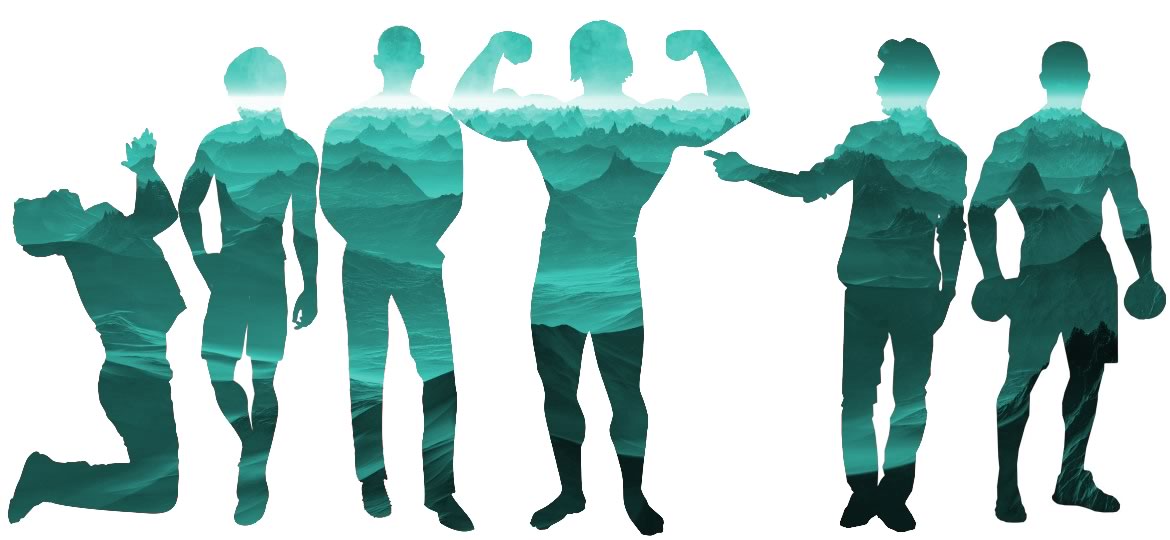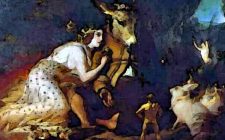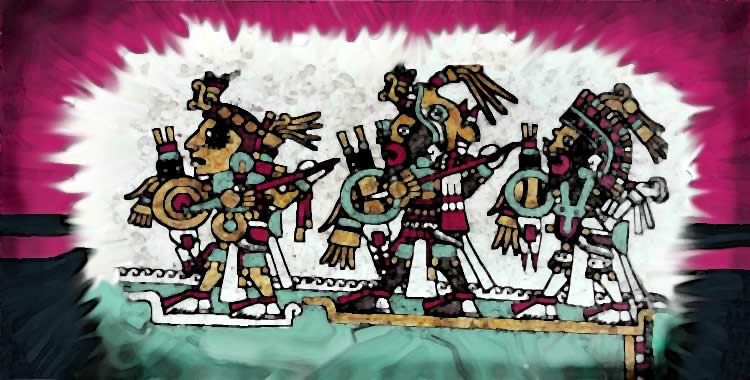I was reading through a set of ten-year-old Dungeon magazines trying to find just the right module to play, when I noticed something. No women. Every one of the modules I had sticky noted was lacking named female NPCs.
Now, I probably just got unlucky in the particular set of modules I noted. It wasn’t like I was systematically cataloguing them for a thesis; I was just looking for inspiration for my next adventure. But I was troubled because I didn’t even notice that all the NPCs were male until I made a list of all of them. I’m going to say that again, because it bears repeating.
I didn’t even notice that all the NPCs were male until I listed them.
If I had just GMed the module without making up a cast list first, I might never have noticed. It certainly didn’t stand out to me when I first skimmed through the modules. That hit me deep, because it showed me how skewed my expectations were. No, I’ll be honest. It showed me how skewed my expectations are. Currently. In a deep seated way that no trying to be woke is going to fix.
Unconscious bias is real and powerful, my friends. We can be perfectly well-meaning, but we are all influenced by the culture we’re in, and this culture that I’m in under-represents women. Movies and TV constantly show us worlds with more men than women, and where the men are more active than women and speak more than women. This skews our expectations of what what the world looks like. Only certain male-dominated spaces have more men, but that’s not the world as a whole. But since RPGs are definitely part of those male-dominated spaces, I think I’m so used to seeing seeing the world through that male-dominated lens that I don’t see it anymore.
It’s just the world.
But if we build an RPG world, the players experience it through their interaction with the plot. And if the only plot-relevant characters in the made-up world are male, we show the players a world without women. It’s not like in a movie or TV show where we can show women in the background walking by on a city street or serving coffee to the to the main characters or something and they’re quietly there by implication (which is also a problem, but not my point right now).
If we don’t voice them, they aren’t there.
And if you’re one of those people that argues that characters are male because of realism, then just go away and read a different blog. I don’t want to have the whole “fantasy isn’t realistic by definition” argument or the “there is no generic European middle ages” argument or spend twenty minutes telling you about real women in history (although if you’re interested in that sort of thing, definitely check out Rejected Princesses because that is one awesome collection of badass historical women). It’s tedious and neither of us will convince the other.
Plus it misses the point.
My point is that even if I were running a perfectly acurate historical RPG with everyone conforming to gender norms, and my adventurers really came to town to investigate a murder, some of the witnesses and artisans and rich patrons and festival-goers and pilgrims and clergy and street urchins and minor nobility and everything would be female.
So if I want a fantasy world that feels real, I need to have women in it somewhere, and unlike movies, in RPG modules there are no women in the background. There are just the characters we voice. So if the NPCs are by-default male, then the world will be a female-free zone.
Note, I’m not saying people who write modules without women are bad, I’m saying the opposite. I’m saying we can be perfectly non-misogynistic and still create woman-free worlds accidentally. Being a woman who subscribes to Feminist Frequency did not vaccinate me against that bias. Taking a college course on gender does not shield me from it. Because we all get the same cultural indoctrination. These things I did to learn about the bias just make me more likely to understand what happened when I fall into traps laid by my own bias. They don’t erase the bias.
Understanding the Bias
So, being an Overprepared GM, when I unintentionally fell into that trap, I tried to think through how this particular subconscious quirk it worked and what I could do to compensate for it. And what tools I could craft in that effort, because clearly everything can be improved with the proper application of some combination of bacon, duct tape, Wd40, and infographics.
Now, as far as I can see, there are two different parts to the female representation problem in RPGs, and they’re unequally explored.
- PC Gender Representation
- NPC & Setting Representation
The first – what sort of characters are players able and encouraged to play – is a space that I’d say has been well-examined. Although there are definitely sexist games, I think the industry leaders have been thoughtful and made significant strides in achieving good representation in terms of gender. If I want to buy the books for a game system or setting, I have some good choices to choose from, and some good heuristics to judge whether or not they pass my internal “is it gender-balanced?” threshold (namely, do they show the different character options being female? Are those females unnecessarily sexualized or feminized? Are there mechanics or prose or images that shove players of one gender or another into a particular bucket, or do they encourage the players to play what they want to play?)
But the second – what sort of NPCs do the players meet or fight or hear about – is less well explored. This aspect of representation doesn’t show up in player handbooks. It shows up in the actual adventure and campaigns the players play. That’s what I had run into.
Once I became aware that I was seeing all-male modules, I made a conscious effort to show as many female NPCs as male. I started by making a cast sheet for all my modules. The cast sheet lists each NPC with their name, a short visual description, and their role or profession or purpose in the story. As an aside, this is just a useful thing to have because players tend to forget names and descriptions and ask you to repeat them in later session, so it’s useful to have them all in one place.
So after I create my cast list, I did a simple check to see whether or not I had a gender-skewed module.
And I found that I had a different unexplored bias.
My newer newly-discovered bias was about assigning NPCs gendered professions and roles. Now, if you have a setting where men do certain roles and women do different roles that’s perfectly fine. But I didn’t. I had consciously made an egalitarian setting where men and women could both be warriors or leaders or priests or teachers or tailors or whatever. That was the intent. But when I actually got down to choosing NPCs, I still had a tendency to choose the town leader and guard to be men and the singer and distraught mourner to be woman. So, I had the same number of men as women, but I still fell into the trap of imposing our cultural baggage into a space that I had tried to create to be free of that.
I needed more bacon to fix this mess. With maple syrup AND cheese!
And. And! Lets talk about monsters. It’s really easy to anthropomorphize monsters. Which leads to me using male pronouns with creatures by default (since male is my mental default, and I bet it’s most people’s default in English). Plus, I tended to assign male any creatures that I associated with traditionally-masculine traits. So, I tended to give big, strong, heavy, violent, aggressive, unemotional or simply neutral creatures male pronouns. And the ones I want switched to female tended to be the small, thin, cute, passive creatures. It didn’t help that the module writers had the same hang up, so I had to go through the adventure and change things from he/him/his to it/it/its or she/her/hers a lot.
Because really, male-default monsters don’t make sense. You don’t have stay-at-home, housewife lionesses and moose cows and whales. There’s no reason for fantasy monsters to follow Victorian gender norms any more than actual real animals do.
So if the PCs are running into monsters in their native habitat, a lot of them are going to be female. And if the PCs have the skill check to know at a glance what type of creature they’re fighting and what its modes of attack are and stuff, the PCs would probably be able to tell gender and use the appropriate pronouns, whether that means male, female, or neutral. A real-world hunter isn’t going to look at a momma moose and call it “he” without looking like a noob. I imagine a fantasy hunter is going to be at least as skilled at identifying gender.
And even if I believed that the gender norms in our society were a result of biology (spoiler, I don’t), that really doesn’t hold true for non-humans. A lot of species have the female being bigger and stronger. Or there not being any size difference between male and female. Or altogether different approaches to gender (witness, for example, the non-binary gendered glory of the Banana Slug). So if I’m creating a fantasy world, and having the PCs fight weird fantasy creatures, the creatures have no reason to have the same patterns of gender and sexual dimorphism as humans. But that’s a hard habit to break.
Tools that help
After a bit of experimentation, here’s what I came up with that helped me overcome my own biases in terms of gender.
- Think through the gender expectations for the setting. You should have a picture in your head of what the world is like, so that you can compare it against what the players will experience through your plot. Actually, this is just generally good advice if you want to create an immersive experience. Keep in mind that no one but you sees that picture in your head, so you need to check the modules against your mental picture as you go along.
- Create a Cast List for both named/speaking NPCs and monsters in your modules. Look at the genders your assigning on the list. It doesn’t have to be exactly a 50/50 ratio, but that will give you a way to tell whether you’re trending toward a male-peopled world. Also look at who you’re assigning to which roles and characteristics, to see if your biases are leaking into the setting by accident.
- Flip the Genders. If your cast list is problematic, just flip the genders on some of them. Change previously male characters to use a female name (if named) and pronouns. Don’t have to change anything about them unless it describes something biologically different, like groomed facial hair for a non-dwarf. You’ll probably do a better job of creating a gender-balanced world if you don’t try to make your female characters specifically feminine. For example, in the Runebeast module on this blog, I flipped the gender of the village leader from male to female. I almost described her differently because I’m conditioned to hearing different sorts of descriptions for woman than for men, but decided to just leave her as a tall, lanky veteran with bushy eyebrows. My players weren’t there to date her, so they just needed relevant details – and if her beauty or spouse weren’t relevant when she was male, they also wouldn’t be when I made her female.
- Make sure your stock NPCs are gender-balanced. It’s my understanding that a lot of people have pre-generated characters in case the players go in a direction they didn’t anticipate or they use automatically generated characters through dice rollers. If you’re going to extemporize (shudder), make sure the source of your stock NPCs doesn’t also have the same sort of biases I have. Here are some random female stock NPCs that fill traditional gendered roles.
- The wise woman/witch/herbwoman living on the outskirts of the village who gets blamed for the drought
- The scolding fishwife that they hear from their room
- The gossipy farmwife that they pass on the road
- The innkeeper’s daughter
- The scribe-nun from the abbey who is an expert on some obscure bit of lore they need
- The aristocratic woman making a pilgrimage and needing guards
- The scheming noblewoman who’s rumored to be poisoning the enemies of her family
- The castellan’s wife who runs the estate while her husband is off on crusade
- The star crossed lover who saw something in the night when she was slipping out to meet her now-deceased lover
- The villain who uses her powers of seduction to delude and control men
- The laundress, the weaver, the midwife, the widow.And here are some non-traditionally gendered stock females.
- The beggar child that unwisely tries to pick pocket them or who can be hired to run small errands and tell rumors
- The fur trapper or miner who first discovers the [plot hook] in the woods
- The herald/messenger who rents a room at the tavern at the same time you do
- The guard at the gate when you enter the town
- The stable hand who cares for the PCs horses and may know something about previous travelers
- The head of the thieves guild who worked her way from pickpocket to cat burglar to notorious leader
- The bodyguard who searches and evaluates you before you enter the presence of her charge
- Her charge, the important mucky-muck who’s survived 7 assassination attempts and is now permanently paranoid
- The ferry boat captain who gets them across the river, but threatens to drop them in the middle if they don’t stop making the other passengers nervous. And she means it.
- The pirate captain…er..privateer
- The strategist who hires mercenary groups to achieve specific objectives outside her army’s areas of focus
- The innkeeper, the town sheriff, the alderman, the artificer
- Females that are fat, strong, hairy, ugly, of a different ethnicity, differently-abled, or visibly disfigured.
Looking outward
So, up till now I’ve really focused on the part of this that I own – how I came to recognize my own problem and what I’m trying to do to deal with it. But I think that it would be useful to look at gender in RPG modules just as carefully as we’ve explored gender in the Handbooks and cons.
I think we need something like the Bechdel Test, but specifically for modules. Because in movies and TV, it makes sense to identify whether two females talk to each other, but in RPGs, a writer should avoid having NPCs talk to each other. And the story shouldn’t be focused on the NPCs anyway. So instead I propose the following:
- There is at least one named female NPC
- With whom the players can interact
- Who does at least one of the following
- Doing anything other than serving the PCs
- Saying anything about a topic that’s not a male
Now all I have to do is go through my decades-long collection of modules, code them by gender representation, source, and whatever else I can think of and analyze the results.
I’m definitely going to need more bacon for this.





I seriously got about three paragraphs into this before the waterworks started. If you, methodical mega-mom feminist you, don’t notice, who will? I mean, what world is this for your eldest? I’m not trying to be melodramatic, and I admit to being _super_ off-kilter with my hormones right now, but obviously, not seeing femininity reflected in the world I inhabited had deep, permanent, damaging impacts on me.
So thanks again; this time for championing the sort of visibility we all need 🏆
I’ve actually come a long way here, because in my worlds I tend to build entire matriarchial societies. I’ve had a few players argue that it’s unrealistic – to which I reply “Well, we can imagine dragons and kobolds and magic, we’re inventing and imagining crazy, wild things. Women running cities or villages or armies is less far-fetched. Why do you have a problem with one, but not the other?”
They grumble grumble, but they can go somewhere else if they’ve a problem. Meanwhile, I get to have more fun with the additional nuance for world building!
[…] Overprepared GM writes about unconscious bias and how she defaulted to writing all her NPCs as […]